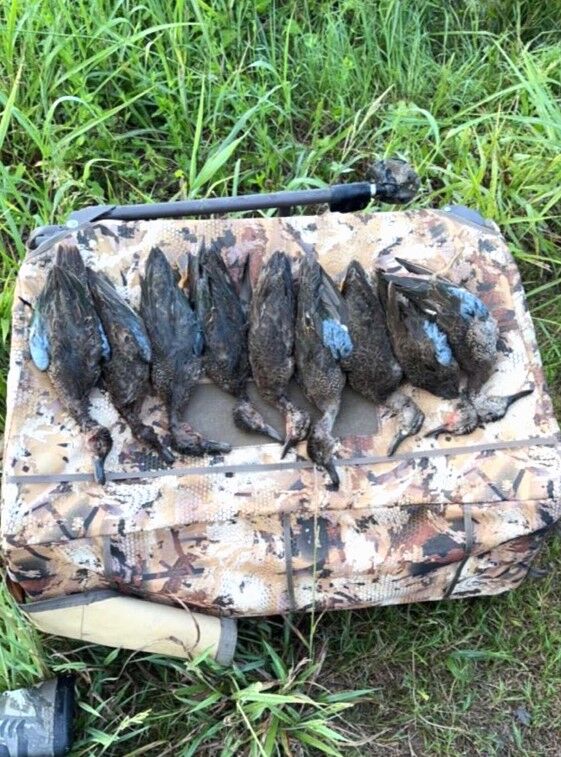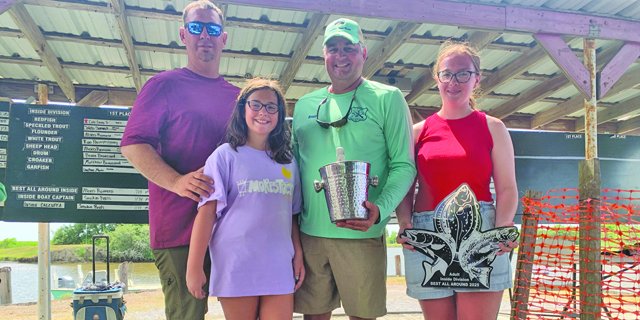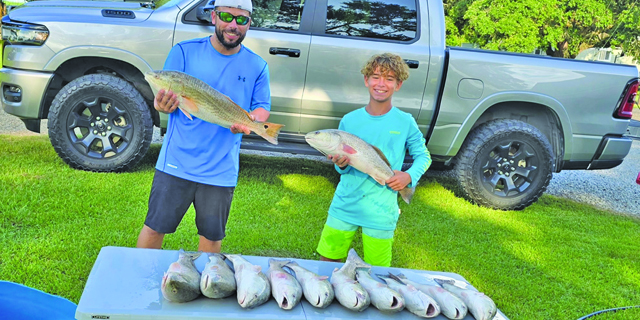Overtime Outdoors: How low can you go? First aerial duck count shows fewer teal down for the special season
Published 6:00 am Tuesday, September 19, 2023

- The special teal hunting season was ushered in Sept. 15 with the lowest number of green-winged teal in Louisiana over the past 10 years, according to a recent aerial waterfowl population survey by the Louisiana Department of Wildlife and Fisheries. These blue-wings were harvested on opening day by Jay Jay Louviere and his hunting party in rural Coteau Holmes.
Teal numbers in Louisiana a few days before the start of the special teal season were lower than last year at this time, lower than the five-year average and lower than the most recent 10-year average.
You could say the migrating teal population’s are so low even down looks like up.
Trending
Jason Olszak, Louisiana Department of Wildlife and Fisheries waterfowl program manager, and his staff flew their annual aerial waterfowl popular aerial survey Sept. 11-13 along the state’s coastal zone and across the Little River Basin. They counted an estimated 148,000 blue-winged teal — 129,000 of them in southwest Louisiana, 17,000 in southeast Louisiana and 2,000 in the Little River Basin.
And nary a green-winged teal was seen during any of those flights. They usually make their way down later in the year.
No wonder many duck hunters, including those from the Teche Area, more than likely saw less teal than they saw in September 2022. Olszak reported a decline of 44 percent fewer blue-winged teal than the same time in 2022, 30 percent less than the five-year average and 24 percent down from the 10-year average.
It’s bleaker than that for the presence, or lack of it, of teal in our neck of the woods, southwest Louisiana. The LDWF biologists estimated there were 50 percent fewer teal in this region last week than the same time in 2022.
Nevertheless, 87 percent of the total teal were in southwest Louisiana when shotguns started firing in earnest Friday morning.
Olszak reported “very poor” habitat conditions in this region because of drought conditions before and during the survey.
Trending
“We estimated less than 5 percent of the agricultural (rice/crawfish) region north and south of Interstate 10 to be flooded, and many harvested rice fields had already been disked,” he wrote in the prepared statement released Sept. 14, the day before the shooting began.
He also said more than half of all the teal in southwest Louisiana were spotted in flooded agricultural fields near Gueydan.
The veteran waterfowl biologist broke down the sorry state of marsh conditions based on physical characteristics he saw from the air. Water levels, extent and health of vegetation both emergent and submerged aquatics, plus any presence of non-native, nuisance plants were taken into consideration.
It all starts with the water levels far below average in southwest Louisiana, according to Olszak. Many small pools were dry completely and most available water was available only in canals or pools quickly separating from their vegetated margins, he wrote.
Olszak noted that desirable submerged aquatic vegetation was almost nonexistent because of the dry pools. Floating vegetation such as salvinia and hyacinths were scarce in the dry pools.
Unfortunately, salvinia and hyacinths are flourishing in the boat canals, many of which held water, according to the biologist.
The aerial waterfowl survey also unveiled evidence of marsh fires in the extreme southwest part of the state. Some were smoking still as the prop plane flew over.
As for government lands, Rockefeller Wildlife Refuge was mostly dry, according to Olszak. Sabine, Cameron Prairie and White Lake water levels in the marsh were far below average.
Lacassine Pool boasted a nearly normal water level with excellent vegetative conditions, he wrote.
Marsh habitat conditions improved significantly to the east of Freshwater Bayou.
The special teal season ends Sept. 30. The regular waterfowl hunting season starts in the West Zone on Nov. 11 and Nov. 18 in the East Zone.
Olszak and his crew will get back up in the air to get a handle on the waterfowl population before the first week of the
DON SHOOPMAN is outdoors editor of The Daily Iberian.





